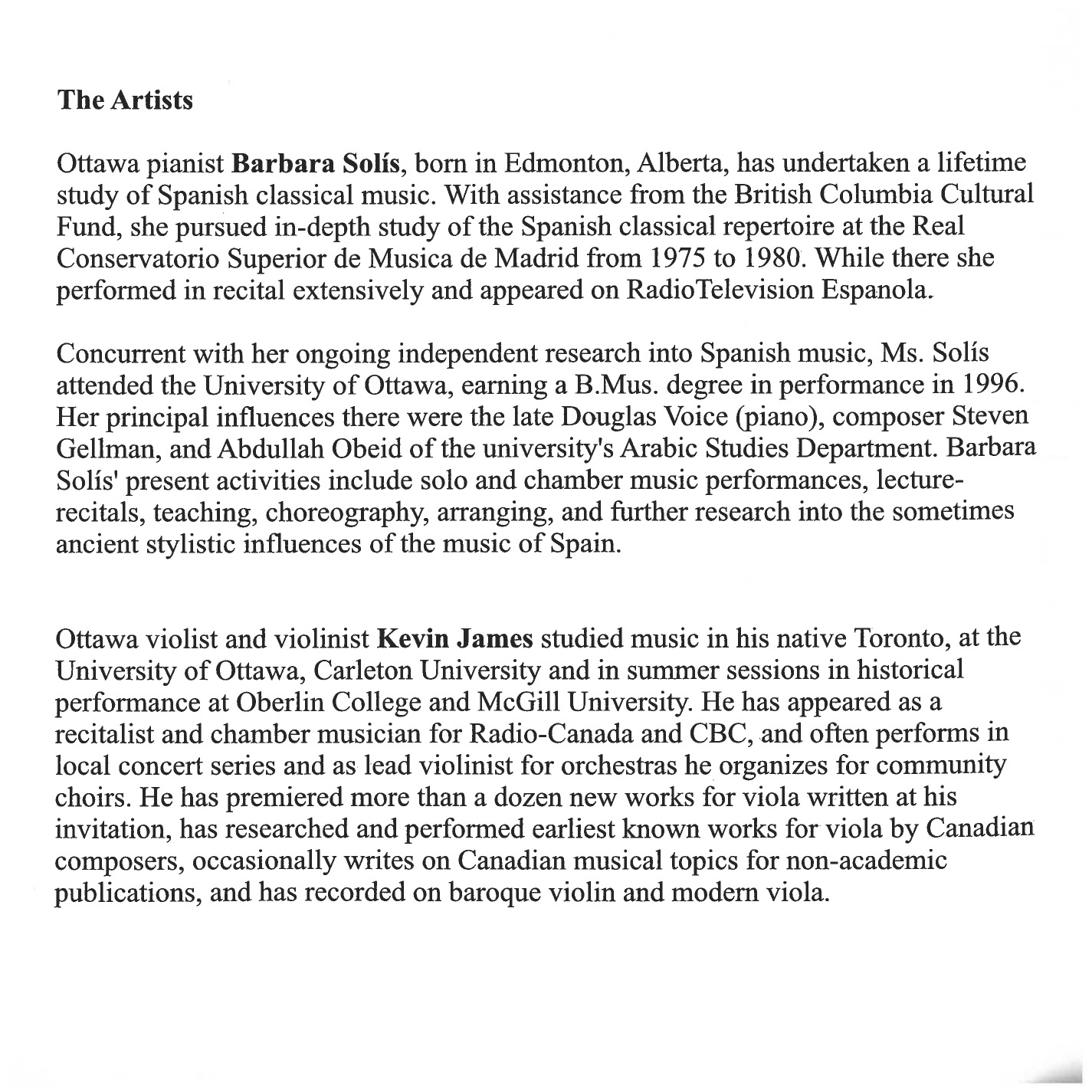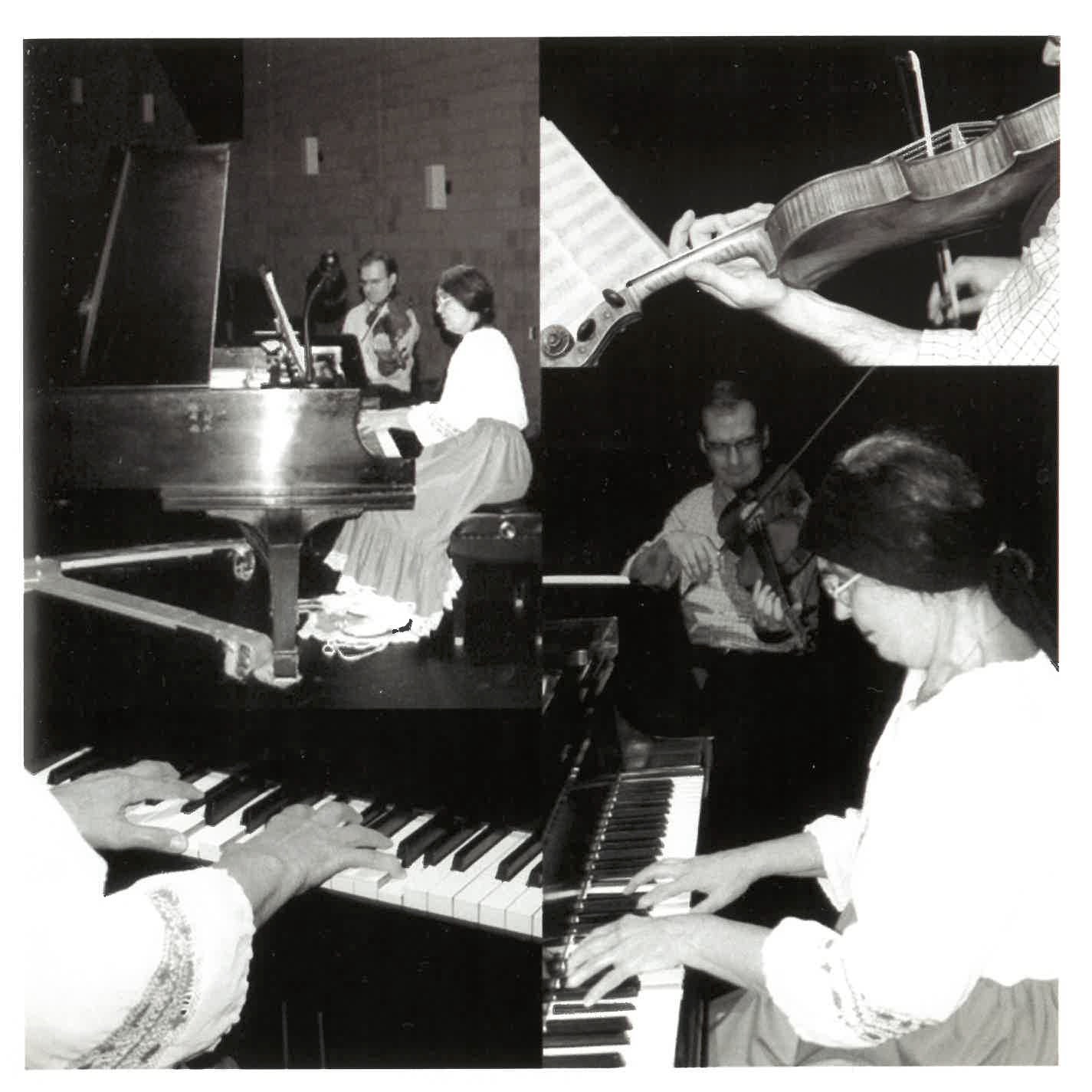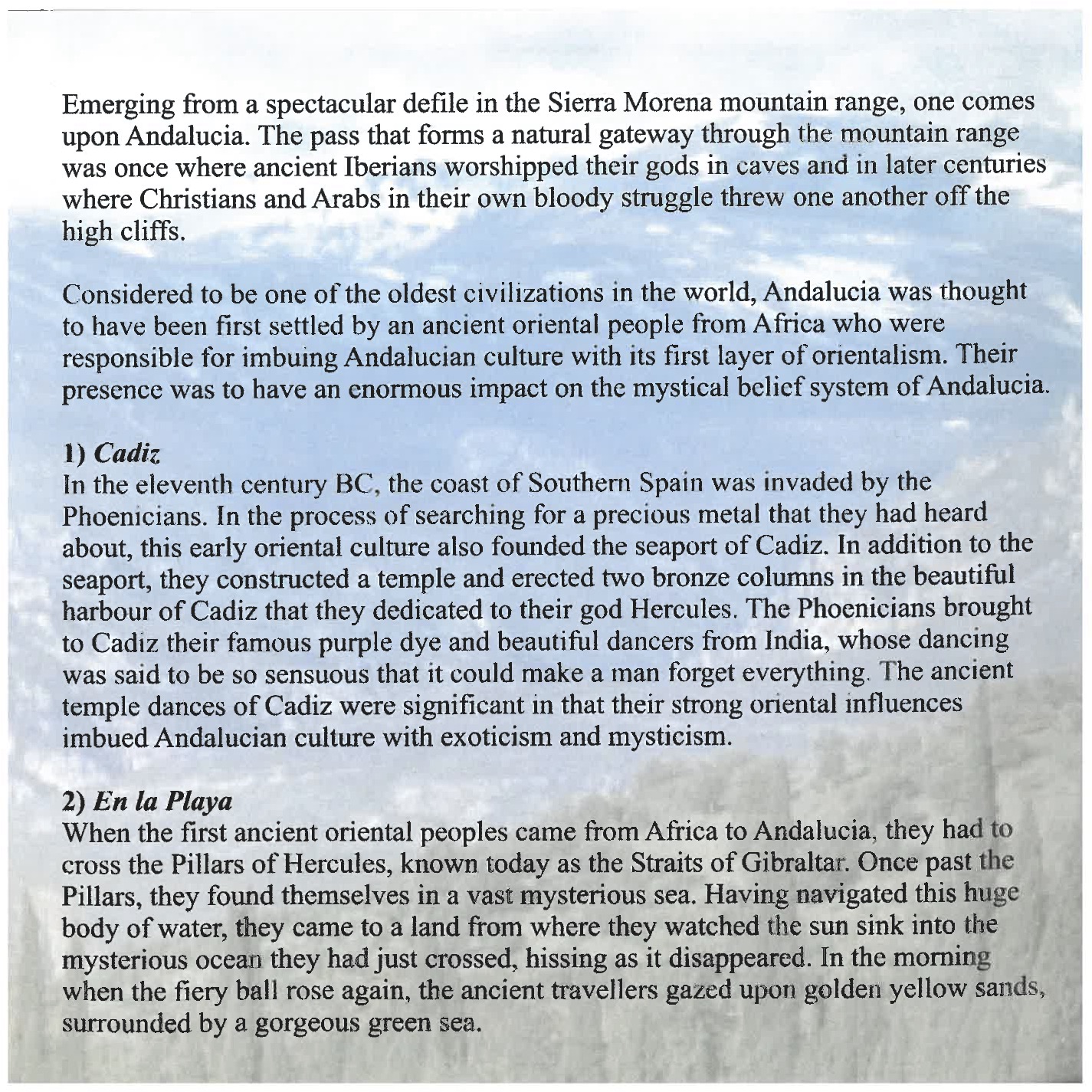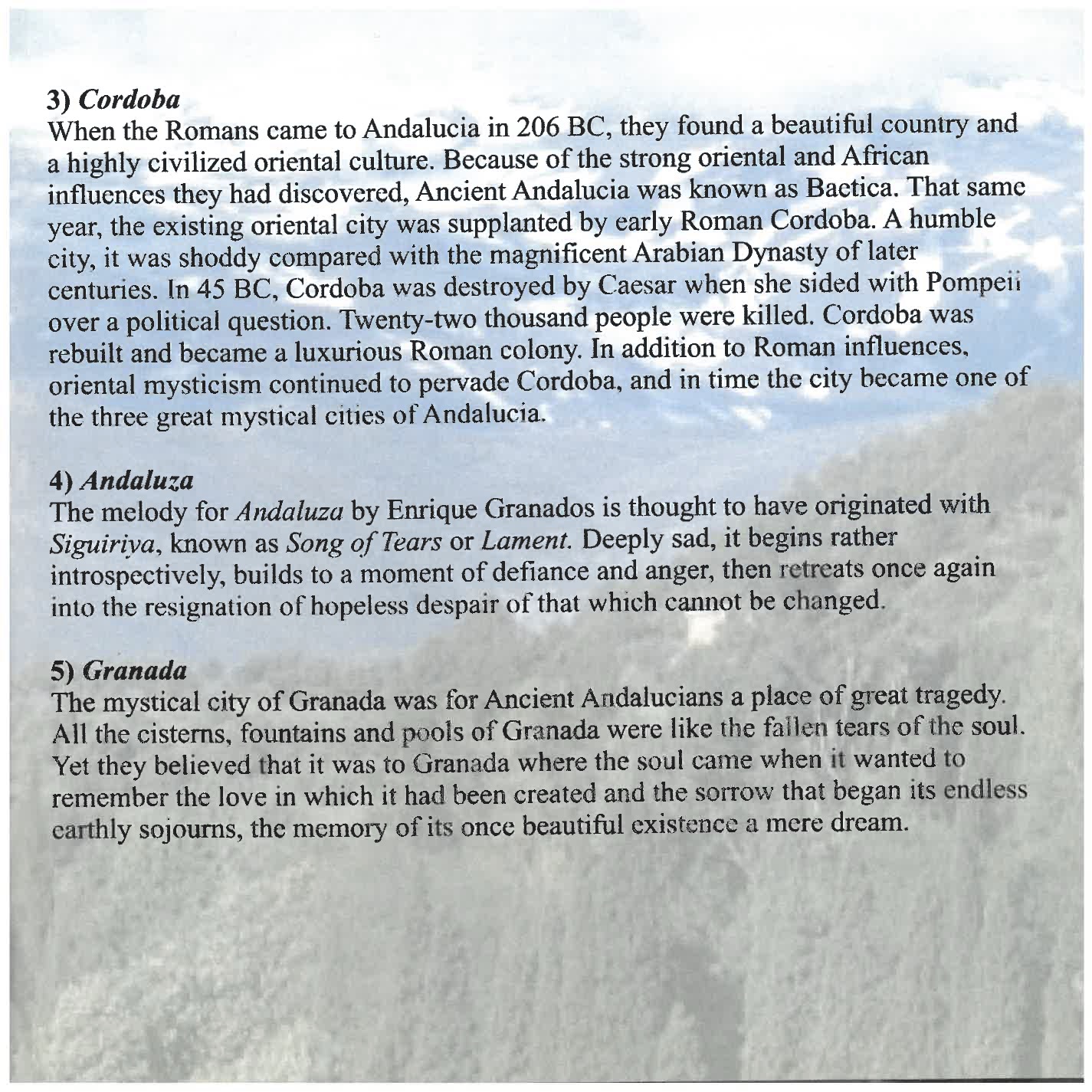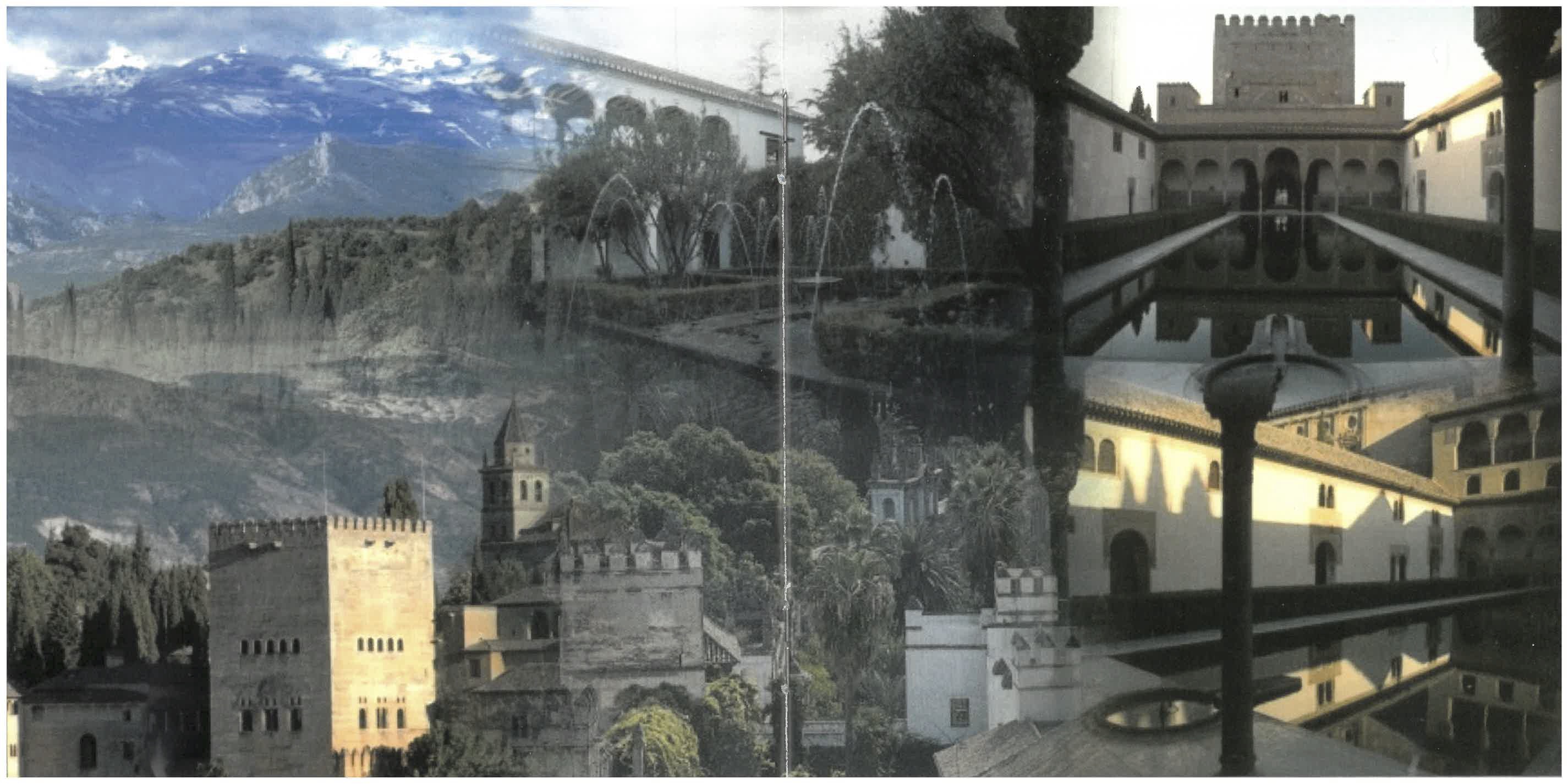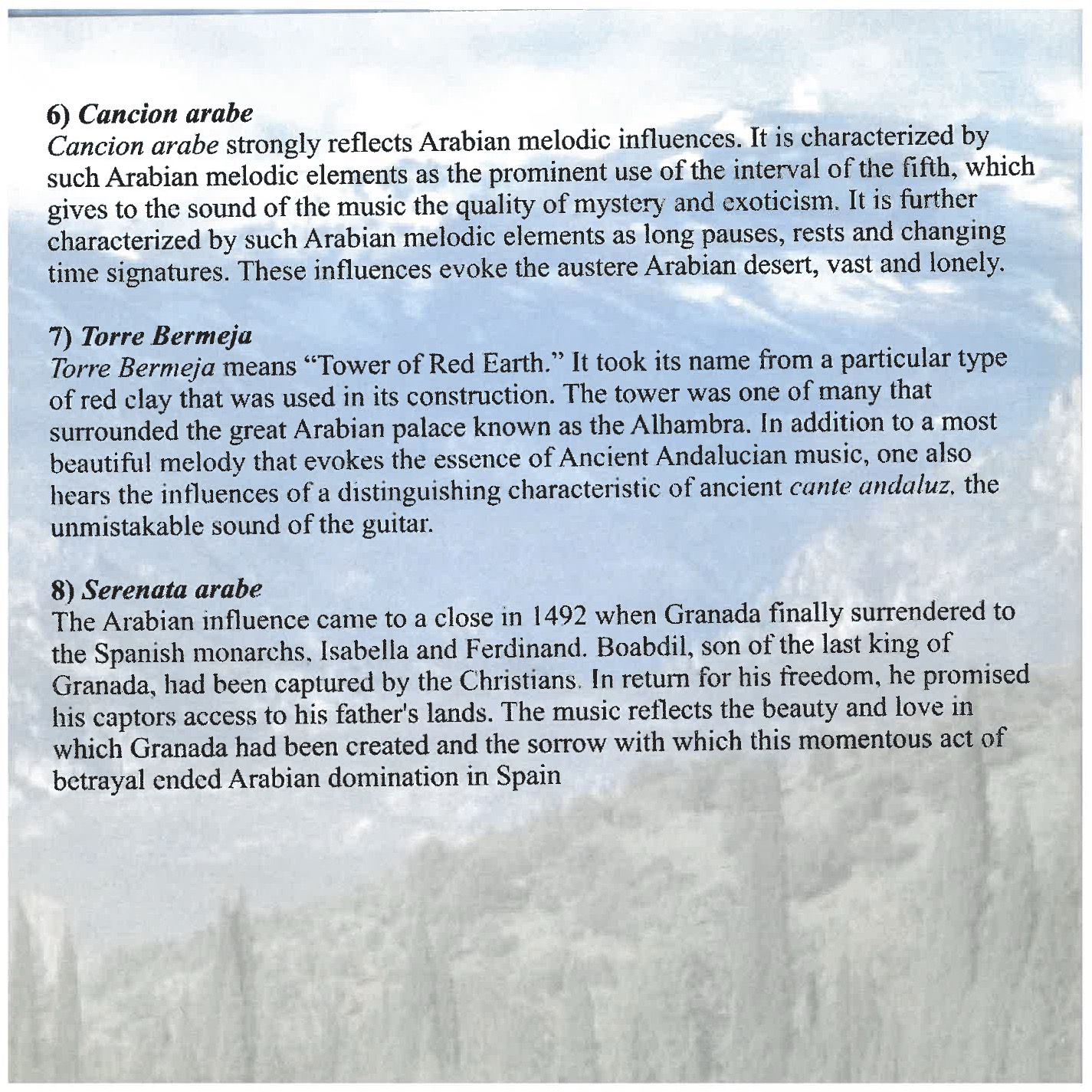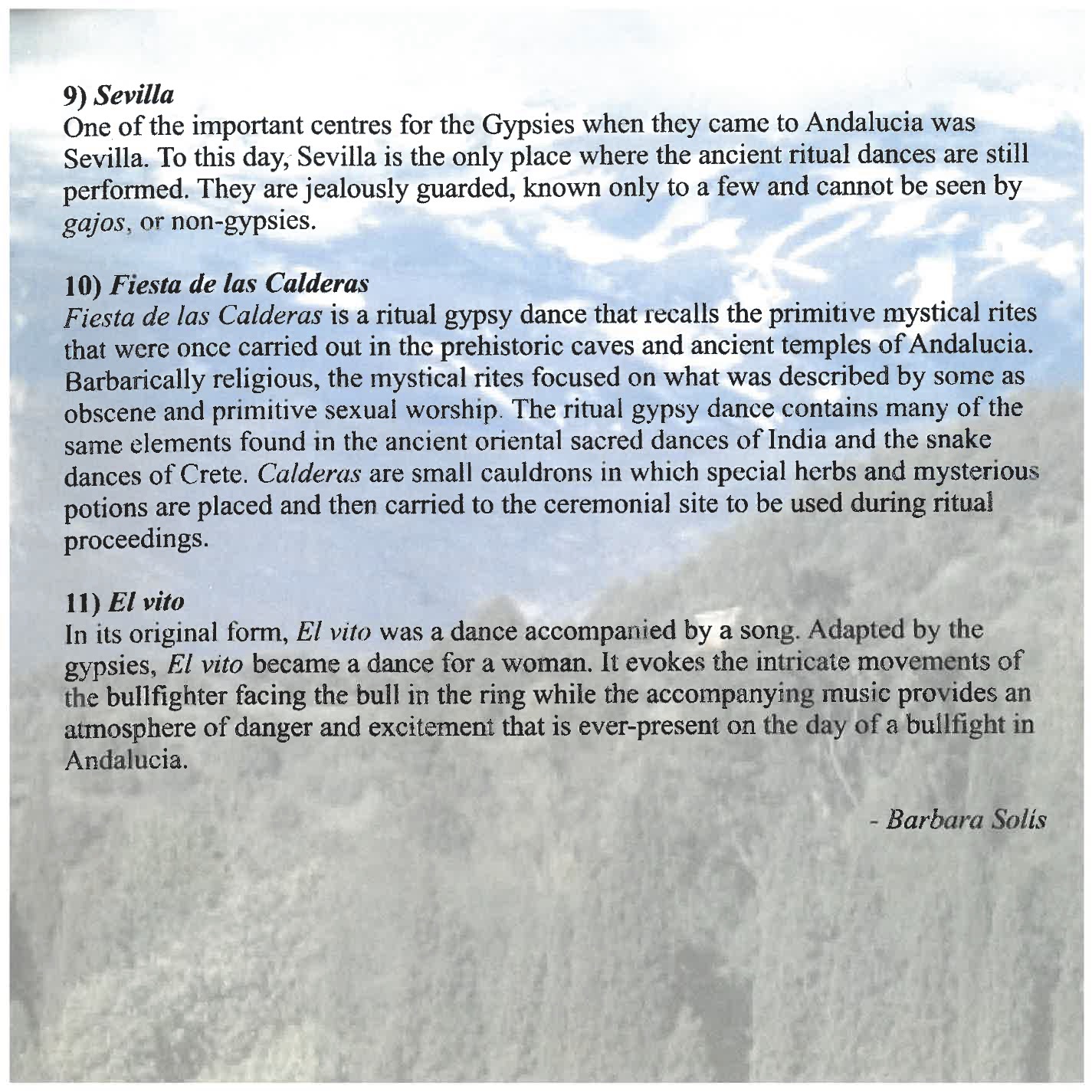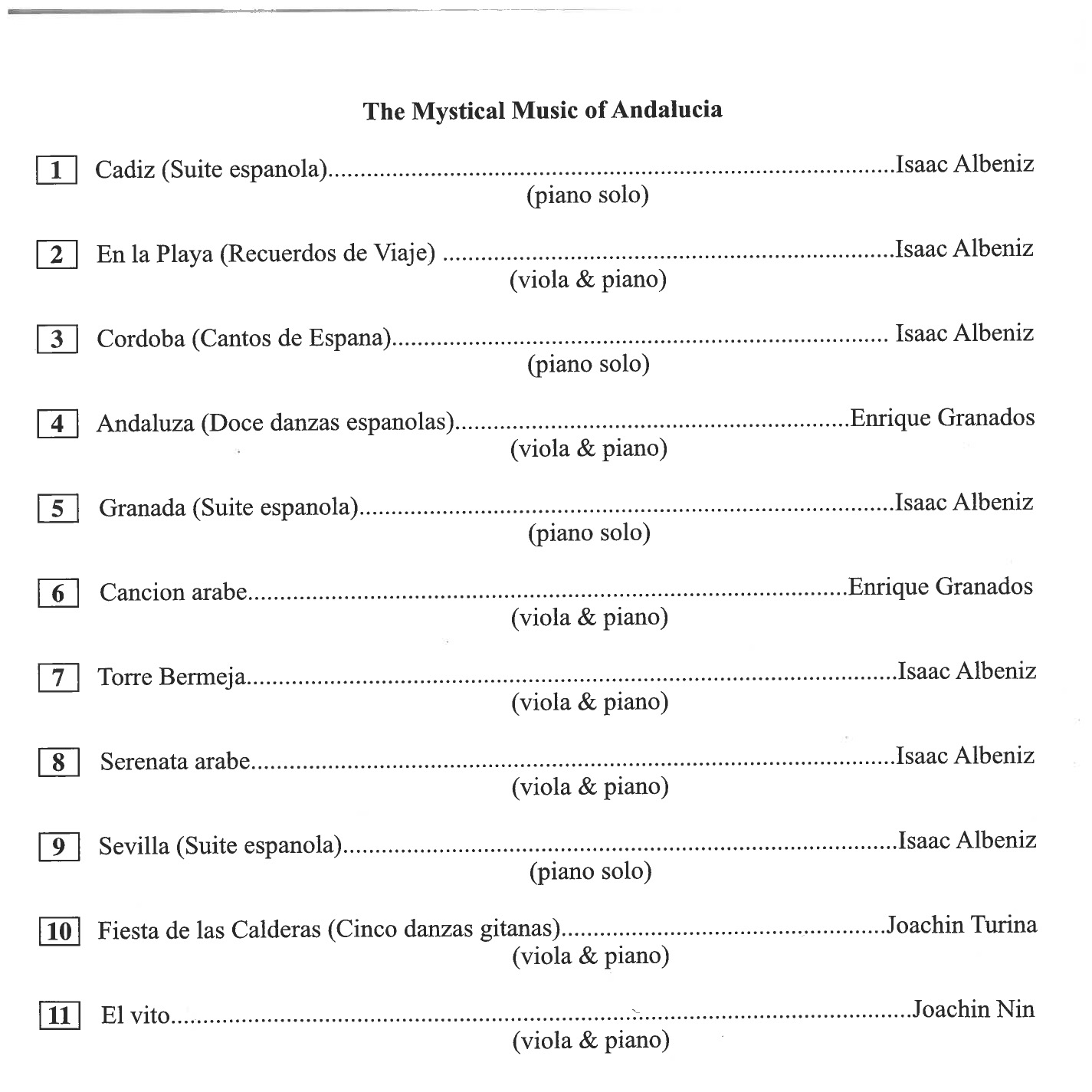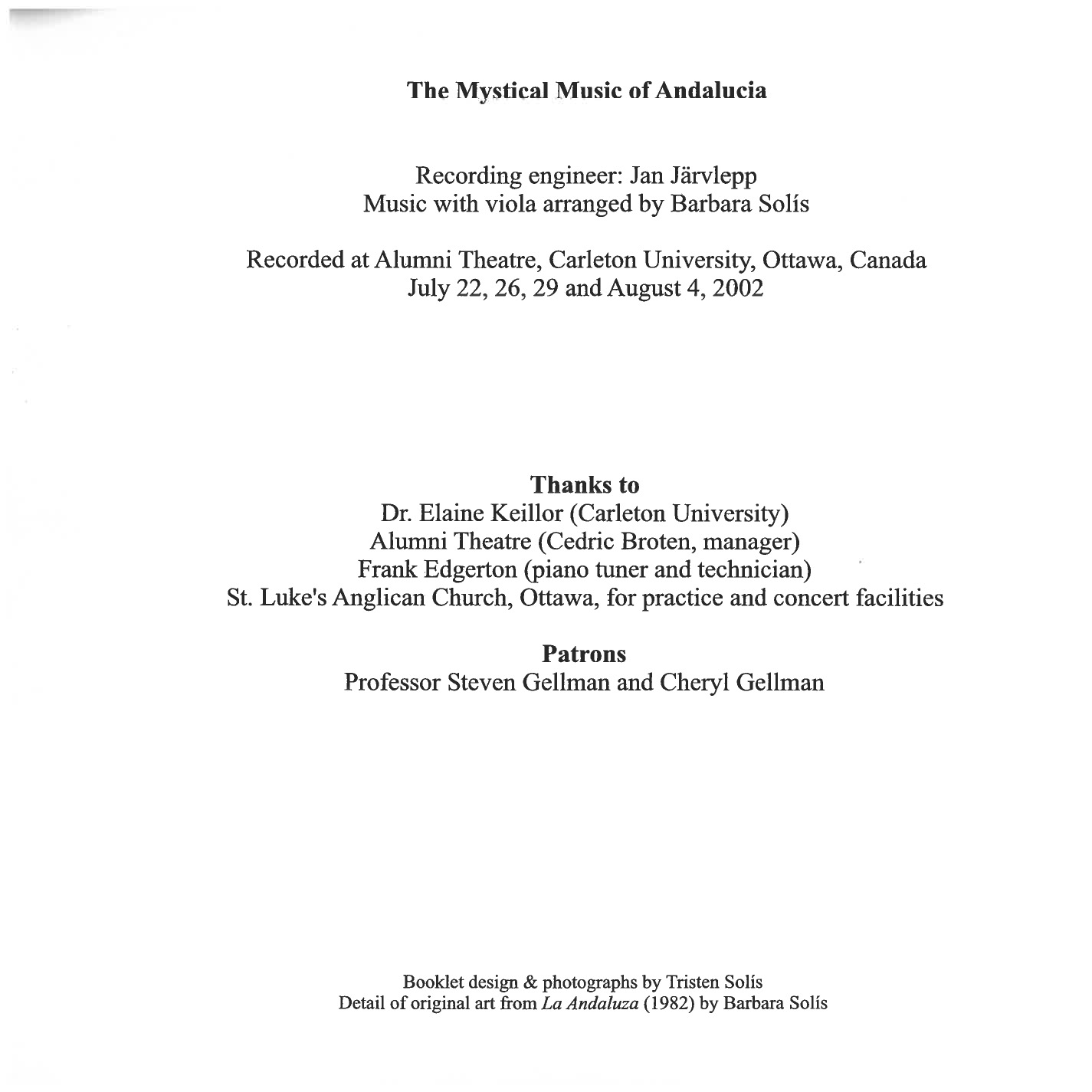The Mystical Music of Andalucia (audio CD)
The Mystical Music of Andalucia, recorded in 2002 and published in 2004, features four solo works for piano and seven of Barbara Solís’s arrangements for viola and piano. Audio files are available in the links below.
Copies of the manuscript scores of Ms. Solís’s arrangements heard on this recording are available on this website (see Musical arrangements by Barbara Solís).
Program notes for audio CD by Barbara Solís
Emerging from a spectacular defile in the Sierra Morena mountain range, one comes upon Andalucia. The pass that forms a natural gateway through the mountain range was once where ancient Iberians worshipped their gods in caves and in later centuries where Christians and Arabs in their own bloody struggle threw one another off the high cliffs.
Considered to be one of the oldest civilizations in the world, Andalucia was thought to have been first settled by an ancient oriental people from Africa who were responsible for imbuing Andalucian culture with its first layer of orientalism. Their presence was to have an enormous impact on the mystical belief system of Andalucia.
Track 1: Isaac Albeniz – Cadiz (solo piano)
In the eleventh century BC, the coast of Southern Spain was invaded by the Phoenicians. In the process of searching for a precious metal that they had heard about, this early oriental culture also founded the seaport of Cadiz. In addition to the seaport, they constructed a temple and erected two bronze columns in the beautiful harbour of Cadiz that they dedicated to their god Hercules. The Phoenicians brought to Cadiz their famous purple dye and beautiful dancers from India, whose dancing was said to be so sensuous that it could make a man forget everything. The ancient temple dances of Cadiz were significant in that their strong oriental influences imbued Andalucian culture with exoticism and mysticism.
Track 2: Isaac Albeniz – En la Playa (piano with viola)
When the first ancient oriental peoples came from Africa to Andalucia, they had to cross the Pillars of Hercules, known today as the Straights of Gibraltar. Once past the Pillars, they found themselves in a vast mysterious sea. Having navigated this huge body of water, they came to a land from where they watched the sun sink into the mysterious ocean they had just crossed, hissing as it disappeared. In the morning when the fiery ball rose again, the ancient travellers gazed upon golden yellow sands, surrounded by a gorgeous green sea.
Track 3: Isaac Albeniz – Cordoba (solo piano)
When the Romans came to Andalucia in 206 BC, they found a beautiful country and a highly civilized oriental culture. Because of the strong oriental and African influences they had discovered, Ancient Andalucia was known as Baetica. That same year, the existing oriental city was supplanted by early Roman Cordoba. A humble city, it was shoddy compared with the magnificent Arabian Dynasty of later centuries. In 45 BC, Cordoba was destroyed by Caesar when she sided with Pompeii over a political question. Twenty-two thousand people were killed. Cordoba was rebuilt and became a luxurious Roman colony. In addition to Roman influences, oriental mysticism continued to pervade Cordoba, and in time the city became one of the three great cities of Andalucia.
Track 4: Enrique Granados – Andaluza (piano with viola)
The melody of Andaluza by Enrique Granados is thought to have originated with Siguiriya, known as Song of Tears or Lament. Deeply sad, it begins rather introspectively, builds to a moment of defiance and anger, then retreats once again into the resignation of hopeless despair of that which cannot be changed.
Track 5: Isaac Albeniz – Granada (solo piano)
The mystical city of Granada was for Ancient Andalucians a place of great tragedy. All the cisterns, fountains and pools of Granada were like the fallen tears of the soul. Yet they believed that it was to Granada where the soul came when it wanted to remember the love in which it had been created and the sorrow that began its endless earthly sojourns, the memory of its once beautiful existence a mere dream.
Track 6: Enrique Granados – Cancion arabe (piano with viola)
Cancion arabe strongly reflects Arabian melodic influences. It is characterized by such Arabian melodic elements as the prominent use of the interval of the fifth, which gives to the sound of the music the quality of mystery and exoticism. It is further characterized by such Arabian melodic elements as long pauses, rests and changing time signatures. These influences evoke the austere Arabian desert, vast and lonely.
Track 7: Isaac Albeniz – Torre Bermeja (piano with viola)
Torre Bermeja means “Tower of Red Earth.” It took its name from a particular type of red clay that was used in its construction. The tower was one of many that surrounded the great Arabian palace known as the Alhambra. In addition to a most beautiful melody that evokes the essence of Ancient Andalucian music, one also hears the influences of a distinguishing characteristic of ancient cante andaluz, the unmistakable sound of the guitar.
Track 8: Isaac Albeniz – Serenata arabe (piano with viola)
The Arabian influence came to a close in 1492 when Granada finally surrendered to the Spanish monarchs, Isabella and Ferdinand. Boabdil, son of the last king of Granada, had been captured by the Christians. In return for his freedom, he promised his captors access to his father’s lands. The music reflects the beauty and love in which Granada had been created and the sorrow with which this momentous act of betrayal ended Arabian domination in Spain.
Track 9: Isaac Albeniz – Sevilla (solo piano)
One of the important centres for the gypsies when they came to Andalucia was Sevilla. To this day, Sevilla is the only place where the ancient ritual dances are still performed. They are jealously guarded, known only to a few and cannot be seen by gajos, or non-gypsies.
Track 10: Joachin Turina – Fiesta de las Calderas (piano with viola)
Fiesta de las Calderas is a ritual gypsy dance that recalls the primitive mystical rites that were once carried out in the prehistoric caves and ancient temples of Andalucia. Barbarically religious, the mystical rites focused on what was described by some as obscene and primitive sexual worship. The ritual gypsy dance contains many of the same elements found in the ancient oriental sacred dances of India and the snake dances of Crete. Calderas are small cauldrons in which special herbs and mysterious potions are placed and then carried to the ceremonial site to be used during ritual proceedings.
Track 11: Joachin Nin – El vito (piano with viola)
In its original form, El vito was a dance accompanied by a song. Adapted by the gypsies, El vito became a dance for a woman. It evokes the intricate movements of the bullfighter facing the bull in the ring while the accompanying music provides an atmosphere of danger and excitement that is ever present on the day of a bullfight in Andalucia.



